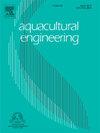Fish mass estimation method based on adaptive parameter tuning and disparity map restoration under binocular vision
IF 4.3
2区 农林科学
Q2 AGRICULTURAL ENGINEERING
引用次数: 0
Abstract
Accurately estimating fish mass is crucial for evaluating fish growth status, enabling precise feeding, and improving aquaculture efficiency. In current aquaculture, invasive measurements may cause certain damage to fish and affect their healthy growth, non-invasive measurements mostly use stereo cameras to capture fish images and extract two-dimensional and three-dimensional features for mass estimation. The calculation of three-dimensional fish features relies on the acquisition of accurate disparity maps. Most current disparity maps are obtained through manual tuning of algorithmic parameters, which not only increases labor and time costs but also introduces a degree of randomness. To address the above problems, a fish mass estimation method based on Adaptive Parameter Tuning-Disparity Map Restoration (APT-DMR) and Multiple Linear Regression (MLR) under binocular vision technology is proposed. Firstly, fish images are obtained using a binocular camera, followed by camera calibration and image correction. Secondly, image processing technologies are used to segment the corrected image to obtain the fish target, and the two-dimensional features of the fish target are extracted. On this basis, the method based on APT-DMR is adopted to obtain the fish disparity map, extract the corresponding key matching points of the left and right images of the fish, and calculate the coordinates of the three-dimensional spatial feature points using the triangular transformation principle, achieving the extraction of the three-dimensional features of the fish target. Finally, fish mass is predicted using the MLR method. Based on the binocular vision technology, the APT-DMR method is employed to obtain the fish disparity map, which realizes the extraction and calculation of the three-dimensional features of the fish. The proposed method effectively addresses the problem that the traditional algorithm needs to constantly tune the parameters to obtain an accurate disparity map. Additionally, a new feature, the fish depth ratio, is introduced to enrich the model representation, and finally, the fish mass is successfully predicted. In addition to saving time and labor costs, the proposed method also effectively eliminates the stress and potential damage to the fish caused by invasive mass measurements. The crucian carp were taken as the experimental object and the proposed method was tested on the real dataset. The results show that the mean absolute error (MAE) is 0.0061, the root mean square error (RMSE) is 0.0084, and the coefficient of determination (R2) is 0.9338. Compared with Polynomial Regression (PR)-Weight, Decision Tree Regression (DTR)-Weight, Random Forest Regression (RFR)-Weight, Back-Propagation Neural Network (BPNN)-Weight, and Support Vector Regression (SVR)-Weight mass estimation methods, the performance of each evaluation metric of the proposed method has been greatly improved, predicting the fish mass more accurately.
双目视觉下基于自适应参数调整和视差图恢复的鱼质量估计方法
准确估算鱼体质量对于评估鱼类生长状况、实现精准投料和提高养殖效率至关重要。在目前的水产养殖中,侵入性测量可能会对鱼类造成一定的伤害,影响鱼类的健康生长,非侵入性测量多采用立体摄像机采集鱼类图像,提取二维和三维特征进行质量估计。鱼类三维特征的计算依赖于精确视差图的获取。目前的视差图大多是通过人工调整算法参数获得的,这不仅增加了人工和时间成本,而且还引入了一定程度的随机性。针对上述问题,提出了一种双目视觉下基于自适应参数调谐-视差图恢复(APT-DMR)和多元线性回归(MLR)的鱼类质量估计方法。首先利用双目摄像机获取鱼类图像,然后进行摄像机标定和图像校正。其次,利用图像处理技术对校正后的图像进行分割得到鱼目标,提取鱼目标的二维特征;在此基础上,采用基于APT-DMR的方法获取鱼的视差图,提取鱼左右图像对应的关键匹配点,并利用三角变换原理计算三维空间特征点的坐标,实现鱼目标三维特征的提取。最后,利用多线性回归方法对鱼类质量进行了预测。基于双目视觉技术,采用APT-DMR方法获取鱼类视差图,实现了鱼类三维特征的提取与计算。该方法有效地解决了传统算法需要不断调整参数以获得精确视差图的问题。在此基础上,引入鱼深比特征丰富了模型的表示形式,成功预测了鱼的质量。除了节省时间和人工成本外,该方法还有效地消除了侵入性质量测量对鱼类造成的压力和潜在伤害。以鲫鱼为实验对象,在实际数据集上对所提出的方法进行了验证。结果表明,平均绝对误差(MAE)为0.0061,均方根误差(RMSE)为0.0084,决定系数(R2)为0.9338。与多项式回归(PR)-权值、决策树回归(DTR)-权值、随机森林回归(RFR)-权值、反向传播神经网络(BPNN)-权值和支持向量回归(SVR)-权值质量估计方法相比,该方法的各评价指标的性能都有较大提高,预测鱼的质量更加准确。
本文章由计算机程序翻译,如有差异,请以英文原文为准。
求助全文
约1分钟内获得全文
求助全文
来源期刊

Aquacultural Engineering
农林科学-农业工程
CiteScore
8.60
自引率
10.00%
发文量
63
审稿时长
>24 weeks
期刊介绍:
Aquacultural Engineering is concerned with the design and development of effective aquacultural systems for marine and freshwater facilities. The journal aims to apply the knowledge gained from basic research which potentially can be translated into commercial operations.
Problems of scale-up and application of research data involve many parameters, both physical and biological, making it difficult to anticipate the interaction between the unit processes and the cultured animals. Aquacultural Engineering aims to develop this bioengineering interface for aquaculture and welcomes contributions in the following areas:
– Engineering and design of aquaculture facilities
– Engineering-based research studies
– Construction experience and techniques
– In-service experience, commissioning, operation
– Materials selection and their uses
– Quantification of biological data and constraints
 求助内容:
求助内容: 应助结果提醒方式:
应助结果提醒方式:


